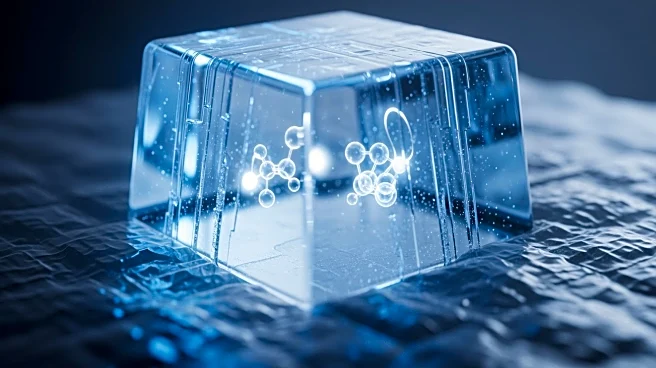What's Happening?
A study conducted by Robert Keenan's group at the University of Chicago, in collaboration with Rajat Rohatgi's lab at Stanford University, has revealed insights into how proteins are protected during synthesis.
Using cryogenic electron microscopy (cryo-EM), researchers captured images of proteins during the glycosylation process, where sugar molecules are attached to proteins. The study focused on GRP94, a protein involved in folding and maturing other proteins, and its interaction with CCDC134 and FKBP11, which act as chaperones to prevent hyperglycosylation. This discovery could have implications for understanding diseases linked to protein synthesis errors.
Why It's Important?
The findings from this study are significant as they provide a deeper understanding of the glycosylation process, which is crucial for protein function and cellular health. Errors in this process can lead to diseases such as osteogenesis imperfecta and impact immune responses. By identifying the protective mechanisms involved, researchers can explore new therapeutic targets for conditions related to protein synthesis. This research also highlights the potential for developing drugs that selectively disrupt problematic proteins without affecting other cellular processes, offering new avenues for treating diseases linked to protein synthesis.
What's Next?
The study opens up possibilities for future research into targeting GRP94 and its chaperones, CCDC134 and FKBP11, as potential therapeutic strategies. Researchers may focus on developing drugs that can selectively interfere with these proteins to prevent hyperglycosylation and its associated diseases. The insights gained from this study could lead to advancements in drug development, particularly in targeting proteins involved in cellular processes linked to diabetes and cancer.











